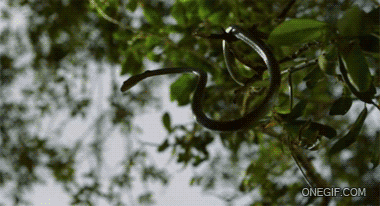Wireless Electricity Transmission
Magnetic induction is a technology that you will probably remember from your physics classes at high school.
The magnetic fields used to transfer energy are "perfectly safe" -- in fact, they are the same kind of fields used in Wi-Fi routers.
In the house of the future, wire-free energy transfer could be as easy as wireless internet.
If all goes to WiTricity's plans, smartphones will charge in your pocket as you wander around, televisions will flicker with no wires attached, and electric cars will refuel while sitting on the driveway.
WiTricity has already demonstrated the ability to power laptops, cell-phones, and TVs by attaching resonator coils to batteries -- and an electric car refueler is reportedly in the works.
Introduction
Wireless Power transfer was first demonstrated by Nikola Tesla in the 1890s, however it is only really in the last decade that the technology has been harnessed to the point where it offers real, tangible benefits to real world applications. Applications using resonant wireless power technology have been most noticeable in the Consumer Electronics market where wireless charging promises to deliver new levels of convenience for the charging of millions of everyday devices.
(Wireless) Inductive Power Transfer or IPT involves the transmission of energy from a power source to an electrical load, without connectors, across an air gap. The basis of a wireless power system involves essentially two coils – a transmitter and receiver coil. The transmitter coil is energized by alternating current to generate a magnetic field, which in turn induces a current in the receiver coil.
How does Wireless Power work?
The basics of wireless power involves the transmission of energy from a transmitter to a receiver via an oscillating magnetic field.
To achieve this, Direct Current (DC) supplied by a power source, is converted into high frequency Alternating Current (AC) by specially designed electronics built into the transmitter.
The alternating current energizes a copper wire coil in the transmitter, which generates a magnetic field. Once a second (receiver) coil is placed within proximity of the magnetic field, the field can induce an alternating current in the receiving coil.
Electronics in the receiving device then converts the alternating current back into direct current, which becomes usable power.
The diagram below simplifies this process into four key steps.
1. The ‘mains’ voltage is converted in to an AC signal (Alternating Current), which is then sent to the transmitter coil via the electronic transmitter circuit.
2. The AC current flowing through the transmitter coil induces a magnetic field which can extends to the receiver coil (which lies in relative proximity)
3. The magnetic field then generates a current which flows through the coil of the receiving device. The process whereby energy is transmitted between the transmitter and receiver coil is also referred to as magnetic or resonant coupling and is achieved by both coils resonating at the same frequency. Current flowing within the receiver coil is converted into direct current (DC) by the receiver circuit, which can then be used to power the device.
What is meant by “Resonance”?
The distance at which the energy can be transferred is increased if the transmitter and receiver coils are resonating at the same frequency.
This resonant frequency refers to the frequency at which an object naturally vibrates or rings – much like the way a tuning fork rings at a particular frequency and can achieve their maximum amplitude.
A Brief History
The idea of inductive power was made possible in 1888 when German physicist Heinrich Hertz proved the existence of electromagnetic waves by creating a spark gap transmitter and receiver.
A spark generated by the transmitter also created a small spark in the receiver, which could be seen with a microscope. Serbian American inventor and engineer Nikola Tesla learned of Hertz’s work by the following year and began duplicating his experiments.
By 1891, Tesla had developed a high-tension induction coil, which he used to demonstrate wireless energy transmission. He successfully presented his technique to the American Institute of Electrical Engineers and the National Electric Light Association. By 1894 Tesla had developed the equipment to wirelessly light incandescent lamps at his New York laboratory. This method used resonant inductive coupling, which involves tuning two nearby coils to resonate at the same frequency.
By 1896 he had increased the range of transmission to 30 miles (48 km). Tesla began construction on his Wardenclyffe Tower, designed for wireless broadcasting and power generation, in 1901. After several construction delays and technical setbacks, the project ran out of funds a few years later and was eventually demolished. After this, no significant advances were made for more than 50 years.
In the early 1970s, experiments with RFID tags began and by the early 2000’s Professor She Yuen (Ron) Hui and S.C. Tang developed a charger to provide resonant power transfer for small electronics. Today wireless power is used for everything from industrial motors to charging smartphones and tablets.
Researchers predict that wireless power will be making a significant contribution to energy supplies by the end of this decade.
Benefits of Wireless Power
1. Reduce costs associated with maintaining direct connectors
2. Greater convenience for the charging of everyday electronic devices
3. Safe power transfer to applications that need to remain sterile or hermetically sealed
4. Electronics can be fully enclosed, reducing the risk of corrosion due to elements such as oxygen and water.
Robust and consistent power delivery to rotating, highly mobile industrial equipment
5. Delivers reliable power transfer to mission critical systems in wet, dirty and moving environments.
6. Whatever the application, the removal of the physical connection delivers a number of benefits over traditional cable connectors, some of which aren’t always obvious. The video below highlights just some of the benefits and advantages of wireless power and offers an insight into a world where wireless power is widely integrated into industrial and mission critical environments.
http://www.youtube.com/embed/tKJGpXIu8s0
Source:-http://powerbyproxi.com/wireless-power/





















